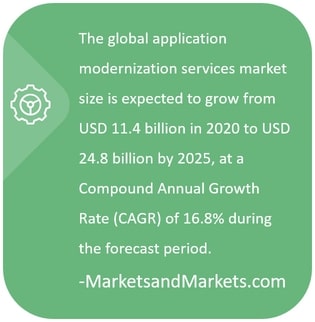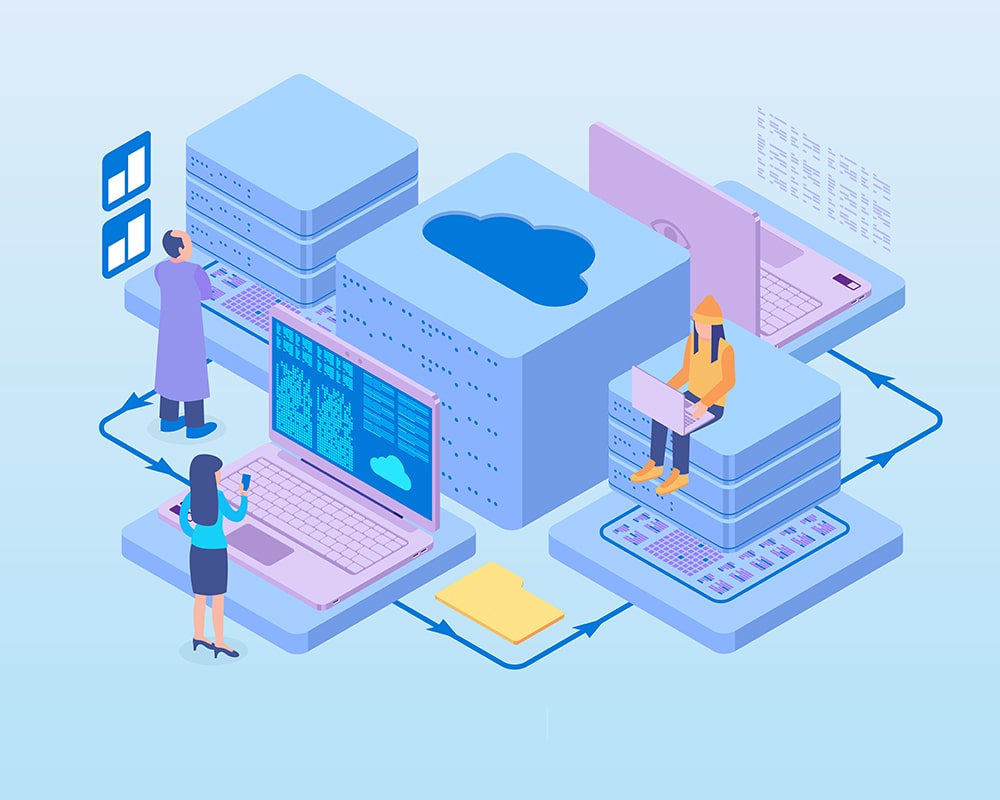September 22, 2021 By: Sumit Kothiyal
As many global organizations are embracing digitalization, the migration of legacy applications to new platforms is a critical move to unlock the full potential of digital transformation. Enterprises run on standard or custom-coded platforms to perform core operations and support other critical business functions. What was built for stability was not built for speed and agility and hence impacts the service delivery models and the customer experience in constantly evolving market dynamics.
As enterprises are moving towards an “on-the-go” model of business operations, the need to overcome the legacy barrier is not just a desirable state but a business necessity. The modernization options such as re-platforming, rehosting, as well as replacement and retirement, will enable better data security and business agility. With more employees working from remote locations, seamless integration of on-premise and cloud solutions is imperative for a user-friendly interface and enhanced performance.
Global organizations that are repositioning themselves as customer-centric, strive to achieve a synergy of technology, process, and people to streamline their service model to forecast customer expectations and provide a superior service experience. The ability to predict the evolving customer preferences and behaviors is a critical competitive edge to retain and acquire a sustainable customer base. This cannot be achieved with the limitations of the legacy systems that hinder connectivity and provide no actionable data.

Despite the changing business landscape and evolving customer preferences, the transition from legacy to modern application platforms presents a multitude of challenges for organizations to tackle –
- Legacy Vs Modernization Compatibility – Due to the high cost involved in end-to-end modernization, many organizations choose to modernize selective applications, however, a thorough compatibility assessment with other supporting legacy systems must be carried out to ensure seamless operations.
- Knowledge Deficit – A Gartner study conducted in 2019, reports that around 90% of legacy applications would continue to service core business functions for many organizations. Knowledge deficit is identified as a key factor for reticence towards modernization. A myriad of reasons including highly patched-source code, missing functional and technical documentation, and unavailability of developers who implemented the original systems have a major impact in the process of transition even if the strategic support is made available.
- Data Migration – In a typical legacy ecosystem, applications supporting core business functions and critical operations would have business transaction data that run into gigabytes or terabytes. The data is organized and structured across different databases in various formats. The complexity and the difference in the encoding between the legacy systems and modern applications, adds another dimension to the challenge. A thorough understanding of the data quality and data volume is required at the planning stage, with an actionable framework for data mismatch or loss.
Solutions
The business advantages of modernization remain undisputable despite the challenges that exist during the transition. Organizations can overcome these challenges by working with an experienced technology partner with a customizable delivery framework in place.
- Discovery of Business and Technology Environment – A thorough understanding of the existing business and technology landscape is required before embarking on this journey. Without a clear view of business objectives and process complexity, the context of modernization will be restricted to technical transition with no value add to the business or customer experience.
- Assessment of Solution Viability – Impact on business value including ROI, customer satisfaction, new product/service pipeline must be evaluated along with technical factors such as tech support to core functions, futuristic designs, reusability.
- Solution Options – A long-term view and strategic vision is required before adopting a specific solution. The difference between business status-quo and automation viability for both use case-specific and end-to-end processes must be clearly laid out. A technology framework to re-host, re-build, re-platform and re-factor must be done in close collaboration with business and technology stakeholders.
- Value Realization – Modernization brings both business and technical value to the table if planned and executed with precision. Organizations must carry out an evaluation post-implementation to get the big picture.
Business Value
- Planned Vs Delivered
- Customer Satisfaction
- ROI
Technical Value
- Futuristic Design
- Re-usability
- Reduction in Tech Support
Application modernization is a business requirement for seamless operations and robust business continuity despite the challenges in the transition. Organizations that successfully implement modernization understand the risks and anticipate the challenges before designing the migration strategy. To mitigate the risk of failure, it is imperative to have both business and technology stakeholders actively involved during every stage of the transition to overcome the legacy barrier and realize the true value of modernization. To discover ways in which we’re helping enterprises digitally transform and modernize, explore our Application Modernization Services.



